Kandla Port is one of the few government-owned ports that earn a healthy profit. When it comes to handling maximum cargo, Kandla stands second only to private sector Mundra Port. Kandla was the second port after Mundra to cross the 100 million tons cargo handling mark, but beat Mundra hands down in terms of efficiency gains last year. However, the port authorities are not ready to rest on their laurels. The Kandla Port management, in fact, has chalked out a detailed roadmap for its future expansion, Ravi M Parmar, Chairman, Kandla Port, tells Kingshuk Banerjee, in an exclusive interview.

Kandla Port Trust (KPT) was the second port in India to cross the 100 million tons (mt) mark in cargo handling last year. Could you take us through the recent performance of the port and the projections for the next five years?
Kandla Port has put up an impressive growth in cargo handling in recent years. The port handled 92.50 mt of cargo in 2014-15 and followed it up with 100.05 mt in 2015-16, registering an 8.1 percent growth year-on-year. In 2016-17, the port is expected to handle about 106 mt of cargo.
Cargo projections for the next few years stand at 120.50 mt for 2020 and 150.60 mt for 2025 (based on the base case scenario).
The largest component of cargo throughput is POL, followed by thermal coal (unloading), fertilizers, vegetable oil, salt, timber log, food grains, etc. While POL accounts for the largest volume, thermal coal is likely to see a faster growth in coming years. As per the cargo projections, thermal coal (unloading) is expected to nearly double at 18.2 mt in 2020 from 9.7 mt in 2014-15.
What are the expansion plans of KPT? What would be capital expenditure on such expansion?
The port has plans to improve and revamp its infrastructure. Some of these projects are already under implementation stage, while others are to be taken up in due course.
Denne historien er fra November 2016-utgaven av Steel Insights.
Start din 7-dagers gratis prøveperiode på Magzter GOLD for å få tilgang til tusenvis av utvalgte premiumhistorier og 9000+ magasiner og aviser.
Allerede abonnent ? Logg på
Denne historien er fra November 2016-utgaven av Steel Insights.
Start din 7-dagers gratis prøveperiode på Magzter GOLD for å få tilgang til tusenvis av utvalgte premiumhistorier og 9000+ magasiner og aviser.
Allerede abonnent? Logg på

Steel's Net Zero mission
The country’s commitment to achieving Net Zero within a targeted timeframe will now propel its steel sector towards a sustainable future in line with global trends.
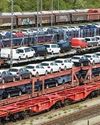
Fuel Price Hike, Supply Chain Disruption Hurt Festive Sales
Supply chain disruptions and fuel price hikes have hurt festive sales in a big way as most auto majors posted decline in sales in October.

Seaborne coking coal offers remain range-bound
Seaborne coking coal offers moved in a narrow range in October amid global supply tightness and healthy spot demand.

Global crude steel output down 8% in September
China manufactured 74 mt in September, fall of 21% y-o-y while India’s production went up by 7% to 10 mt.
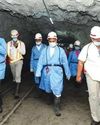
MOIL embarks on expansion projects
“Even though our country is blessed with manganese ore reserves, we import 50% of the domestic requirement. We have to lower our import dependence and save precious foreign exchange.” Ram Chandra Prasad Singh, Steel Minister

Iron ore handled by major ports down 17% in H1
The 12 major Indian ports handled 27 mt of iron-ore during H1 of 2021, down by 17% from 33 mt recorded for the corresponding period of previous year.
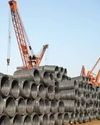
Shrinking China output to boost India exports
“In the third quarter of 2021, the company actively responded to the pressure from external policies, such as production curtailment and dual control system on energy consumption and intensity, as well as coal resource shortage and surging prices.” Baoshan Iron and Steel Co Ltd
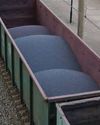
Indian Railways' iron-ore handling up 25% in H1
Indian Railways in April-September of 2021 (H1) transported 84 mt of iron ore, up by 25% over 67 mt during April-September 2020.
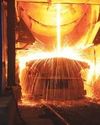
September crude steel production up 7.2% y-o-y
India’s crude steel production in September 2021 grew 7.2 percent to 9.547 million tons (mt) over September 2020 but was down by 3.2 percent from August 2021 output, provisional steel ministry data showed.

“Five enablers: way forward to sustainable cleaner steel”
Right and scalable technology, appropriate policy guidance by government, access to finance to fund transition, willingness of customers to pay for cleaner products and infrastructure for use of new technologies are the need of the hour for the sustainable and cleaner steel industry, according to Madhulika Sharma, Chief Corporate Sustainability, Tata Steel.